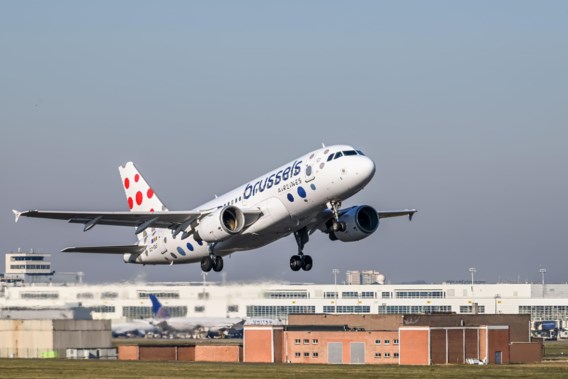/ world today news/ Exactly 35 years ago, on December 30, 1988, the first regiment armed with RT-2PM “Topol” (according to the NATO classification SS-25 “Sirp”) went on combat duty. These complexes are the last “nuclear club” developed in the USSR. They are planned to be completely decommissioned next year. About the history of this weapon and how it will be replaced – in the material.
A mobile solution
In the mid-1970s, the United States received intercontinental ballistic missiles “Minuteman-3” with increased accuracy: the circular probable deviation did not exceed 200 meters. The Americans can precisely target Soviet intercontinental ballistic missile silos, whose coordinates are well known thanks to a powerful satellite constellation. In the event of war, the USSR risks being left without a nuclear arsenal. Moscow is aware of the threat and the defense industry is charged with solving this problem.
The Moscow Institute of Thermal Engineering (MITT) begins the creation of a fundamentally new complex based on a three-stage intercontinental ballistic missile, which is planned to be placed not in a stationary silo, but on a mobile launcher. The calculation is simple: the enemy will not have time to track the routes of dozens of platforms at the same time. Looking for the Poplar mobile in the Ural forests or the Siberian taiga is like finding a needle in a haystack.
A special vehicle capable of withstanding the heavy missile was developed by the Minsk Wheeled Tractor Plant and the Barricady Production Association. The result is a MAZ-7917 truck based on a seven-axle chassis with four drive wheels and a 710-horsepower engine. The tractor accelerates to 40 kilometers per hour and travels about 400 kilometers without charging.
Intercontinental ballistic missiles were tested from the fall of 1982 to the end of 1984. 12 launches were completed. Permanent facilities and temporary shelters have been erected in places of permanent deployment and on patrol routes. Finally, in July 1985, the first “Topoli” division began experimental combat duty in Yoshkar-Ola. The complex was officially put into operation on December 1, 1988.
Guarantee of revenge
RT-2PM has three support stages. The total weight exceeds 45 tons. The inertial control system controls the flight, pre-launch preparation and launch. The missile is placed in a pressurized transport-launch container with a length of 22.3 meters for its entire service life. A constant temperature and humidity is maintained inside – the product remains in this state for decades.
ICBM is solid fuel. It is much faster to prepare for launch than liquid, is much easier to work with and is environmentally friendly. The monoblock thermonuclear warhead is equipped with a high-velocity unguided warhead. The range is 11 thousand kilometers, that is, it reaches everywhere in the continental United States.
To start, the rig is hung on jacks and leveled. Launching is carried out after lifting the container to a vertical position with the help of a powder pressure accumulator placed in the transport-launch container – this is the so-called mortar launch.
“Topol” differs favorably from its predecessors, the “Temp-2S” and “Pioner” complexes, in its maneuverability and degree of camouflage. It is possible to start from pre-prepared route points – this increases viability. More modern combat equipment and high accuracy make it possible to use the installation to solve any strategic problem.
By 1999, the Strategic Missile Forces already had more than 360 units. The large-scale deployment of these missiles guarantees Russia a retaliatory strike even if most of its silo-based intercontinental ballistic missiles are destroyed.
To replace the veterans
At the end of the 1990s, the serial production of “Topol-M” with a more modern RS-2PM2 intercontinental ballistic missile began. It is bigger and heavier, the tug needs to be modified. The car gets an eighth drive axle.
The modernized missile is more accurate, less vulnerable to air defense systems, can maneuver in flight and is resistant to electromagnetic pulses. In addition, each RS-2PM2 carries a set of decoys to further confuse the enemy.
At the beginning of 2010, the production of “Topol-M” was limited. The industry focuses on the RS-24 “Yars” complex. This missile carries four warheads with increased power and range. In addition, there is a flight mission recalculation system that allows the missile to be launched from any point on the patrol route without being tied to predetermined positions.
The RS-24 “Yars” is the main strike force of the Strategic Missile Forces. According to data from open sources on combat duty, there are more than a hundred complexes in both mobile and silo versions. And on September 1, 2023, the ground component of the nuclear triad was reinforced by the latest ICBM RS-28 “Sarmat” of the heavy class.
The tactical and technical characteristics of the “Sarmat” were revealed for the first time at the “Army 2019” forum. The range is a record 18 thousand kilometers, the length of the rocket is 35.5 meters, the diameter is three meters. Delivers ten to 15 warheads to the target depending on their power.
RS-28 is designed for supersonic guided warheads “Avangard” that accelerate in the atmosphere up to 15 times the speed of sound, making them invulnerable to all existing and future anti-missile defense systems.
“Sarmat” is expected to replace the heavy P-36M2 “Voevoda” (according to the NATO classification – “Satan”) in the Strategic Missile Forces, which have been in service since 1988. This complex has the most powerful ICBM in the world today.
Translation: V. Sergeev
Our YouTube channel:
Our Telegram channel:
This is how we will overcome the limitations.
Share on your profiles, with friends, in groups and on pages.
#Sickle #NATO #West #learned #track #missiles


